The Primeira Liga has been very intriguing this season, with three teams being in a constant battle for first place and waiting to take advantage of each other’s mistakes. Benfica, Porto and Sporting CP have all performed impressively since the start of the campaign, showing little to no weaknesses in their games. All three teams were undefeated in their first seven games until Benfica lost points in the eighth round, in a 0-1 defeat by Portimonense. That didn’t move them away from the leading spot, though, as they had a seven-game winning run which put them a step ahead of their opponents, who have a couple of draws each.
Even after the defeat, Benfica were the top scorers in the league, overperforming their xG of 15.03, while also maintaining solid defensive performance. The team’s balanced approach brought them back under the radar and raised the question: could Jorge Jesus repeat his achievements with the team that he brought to success in the league three times in the 2009-2015 period?
The manager arrived from Flamengo in 2020, just after winning the Copa Libertadores the previous year, with memories from the most successful period in his managerial career. The ambitions after their third-place finish last term are higher and he’s trying to enhance their performance and put them ahead of their infallible opponents.
The team were also drawn in the nightmare Champions League group E with Bayern Munich, Barcelona and Dynamo Kyiv, surprising everyone with a 3-0 victory over Blaugrana and moving into the second spot in the group, three points clear of Dynamo.
This scout report in the form of tactical analysis examines Benfica and their tactics.
Formation and main traits
The most common feature of Jesus’ strategy with Benfica is his back three formations. While he occasionally switches to a four-man defensive line, he most frequently relies on a highly positioned back three in possession that allows the wing-backs to move past the central line and the rest of the team to overload the opposition half. With his most used 3-4-3/-3-4-2-1, the manager wants the team to dominate possession and rely on creativity and short pass combinations in attack.
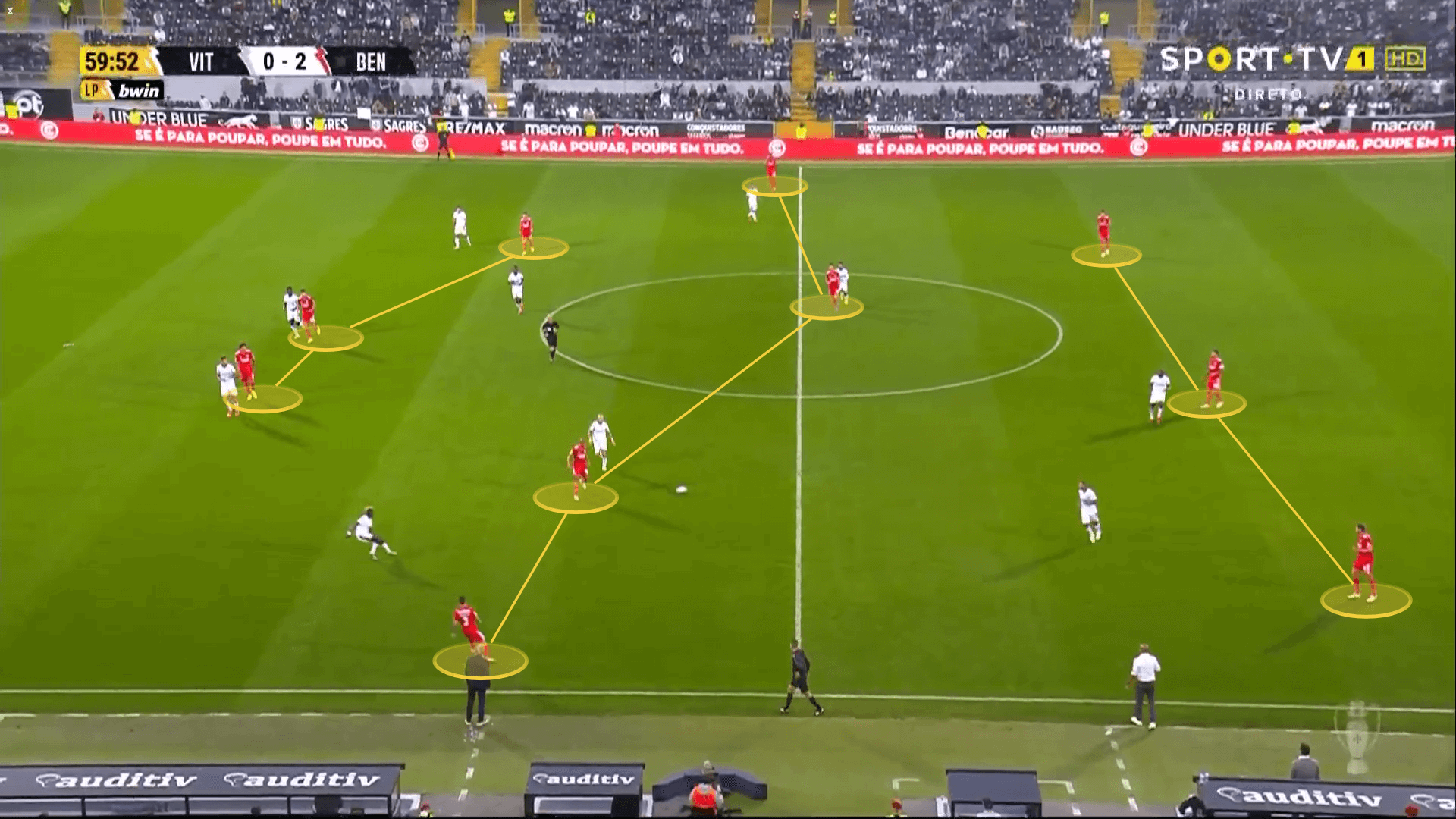
They often try to expose the opposition with crossing attempts but also tend to create chances centrally, opting for through passes. The wing-backs are crucial in possession as they support ball progression and contribute to the attacking actions too. They combine with the attacking players quite well and also often initiate a switch of play in efforts to escape the opposition’s pressing structures.
The manager rotates the starting XI which increases their versatility. That allows them to adjust better to the opposition’s tactics. The defensive unit is the most consistent in terms of playing minutes, with Jan Vertonghen, Nicolás Otamendi and Lucas Veríssimo being the most regular starters. Jesus relies on his most experienced players in defence, trying to avoid any immature mistakes and giving the team more confidence to move into a more advanced position in possession.
The left side of the pitch is well occupied by the wing-back Alejandro Grimaldo, the midfielder João Mário and the winger Darwin Núñez, who often combine in attack and increase the team’s creativity with their movement.
Roman Yaremchuk is deployed in the centre of the attack most frequently, while the right-sided trio would occasionally change.
Ball progression and actions in possession
As mentioned, the team like to dominate possession and have a high pass frequency whenever they get the ball. They achieve 63.4% possession on average, which often helps them to control the games and dominate in the opposition half. They try to progress the ball from the back, starting their build-up play by circulating the ball between the centre-backs.
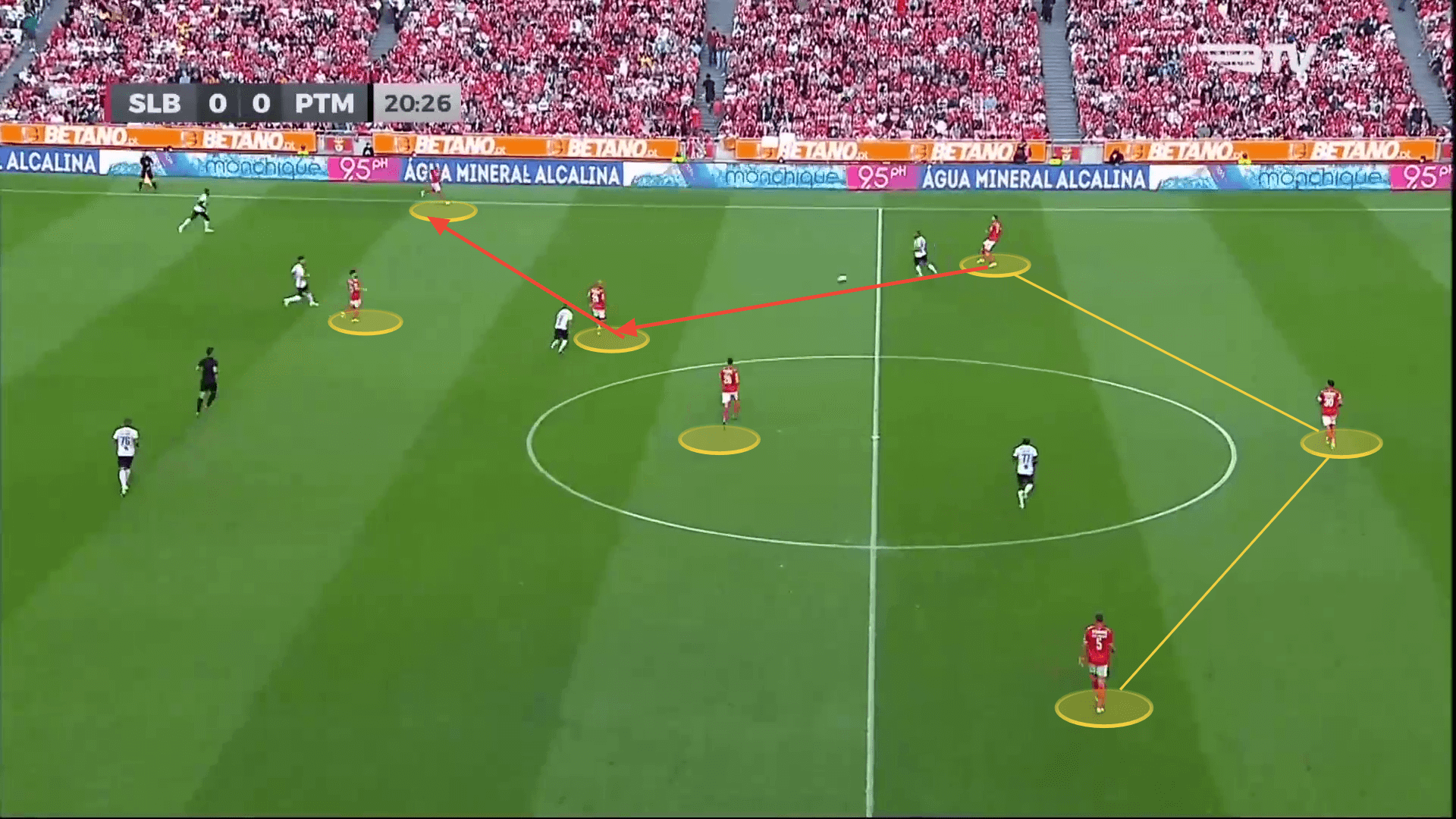
At the time of writing, the team have the highest pass completion rate in the league, with an average of 87.4% of their 517.36 passes per 90 being accurate. To progress the ball, they would either spread out wide to the wing-backs, relying on their pace and control to deliver it further or would use Julian Weigl centrally. He would drop deeper to pick up the ball and have a pivotal role in midfield due to his passing abilities (91% of pass accuracy per 90). João Mário would also move around, acting as a passing outlet, having an important role in the half-spaces.
The team try to advance the ball with quick short passing combinations and are second in the league in terms of passes per minute of possession. Instead of delaying the play and decreasing the tempo, they complete 15.3 passes per possession, which illustrates the intensity of their movement.
The players often try to outplay their markers combining their pace and control, which results in the team’s high number of progressive runs per 90. Many of the regular starters are great dribblers which helps them to hold onto the ball and progress it successfully. Their creativity is also impressive, as many of the players have strong spatial awareness. That results in sending a lot of through balls and smart passes and creating goalscoring chances for each other.
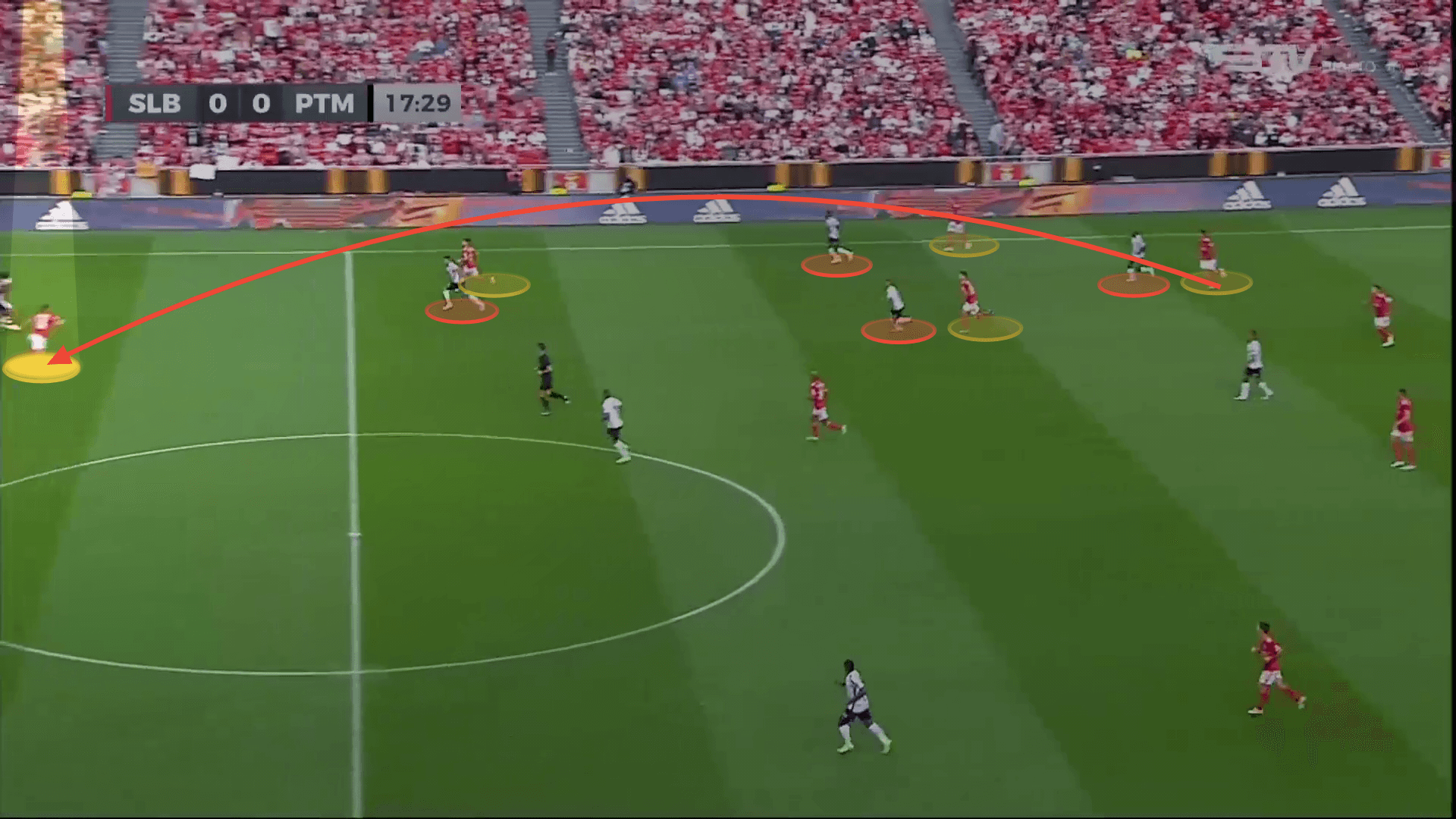
Benfica’s compact shape in possession and their constant movement decrease the spaces between the players and allows them to open the passing lanes and execute the short passing strategy well.
Final third ventures
The team have different attacking assets and constantly try to penetrate in different ways, combining dribbling, runs off the ball and link-up-play. Their efforts result in being second in the league in terms of shots per 90.
Many of their chances are created through their movement on the flanks and thanks to their crossing attempts. Grimaldo constantly enters the advanced areas and supports the team with 4.74 crosses on average per game, which adds explosiveness to their attack. His control allows him to take on his markers and deliver the ball to his teammates upfront.
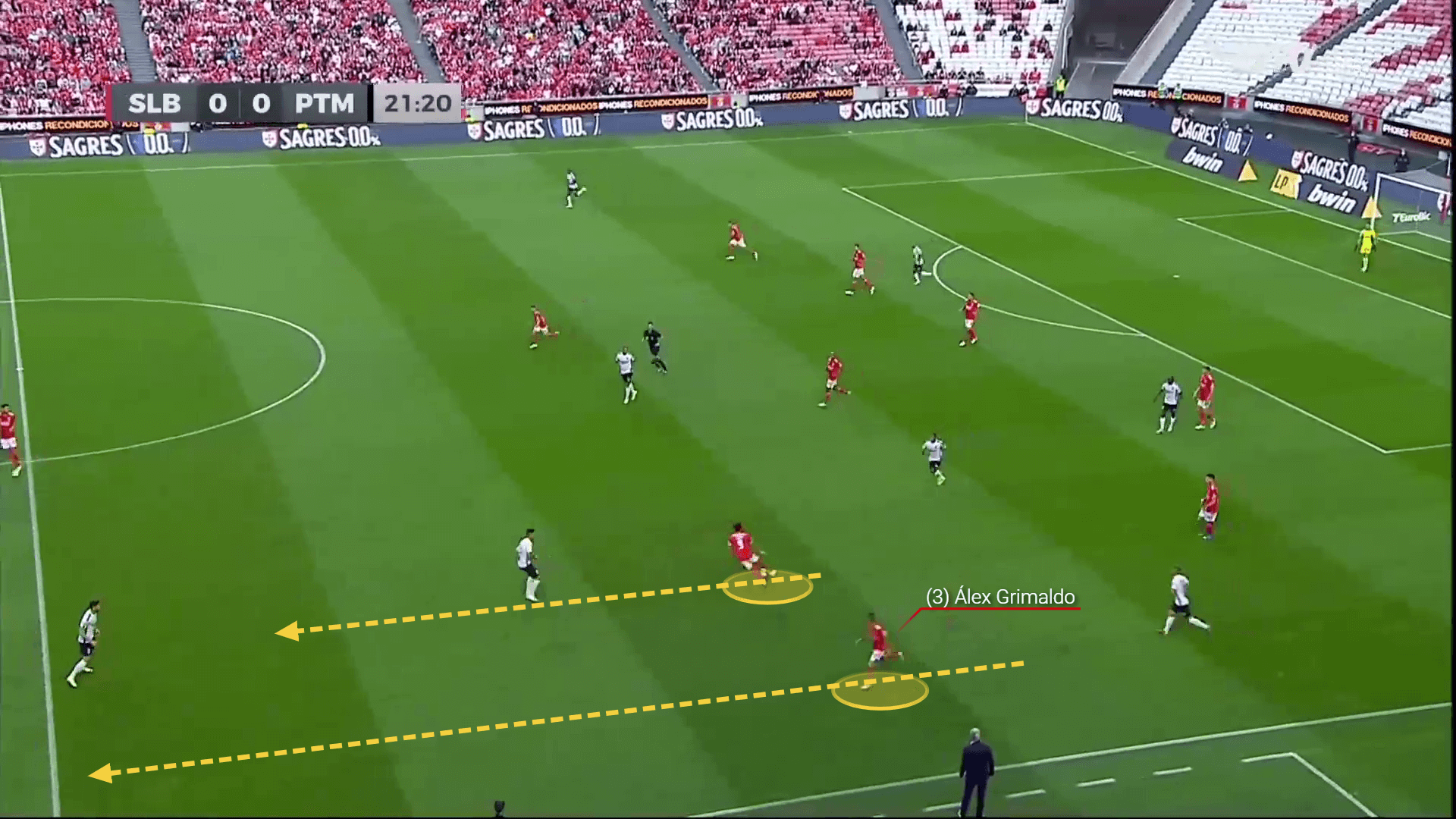
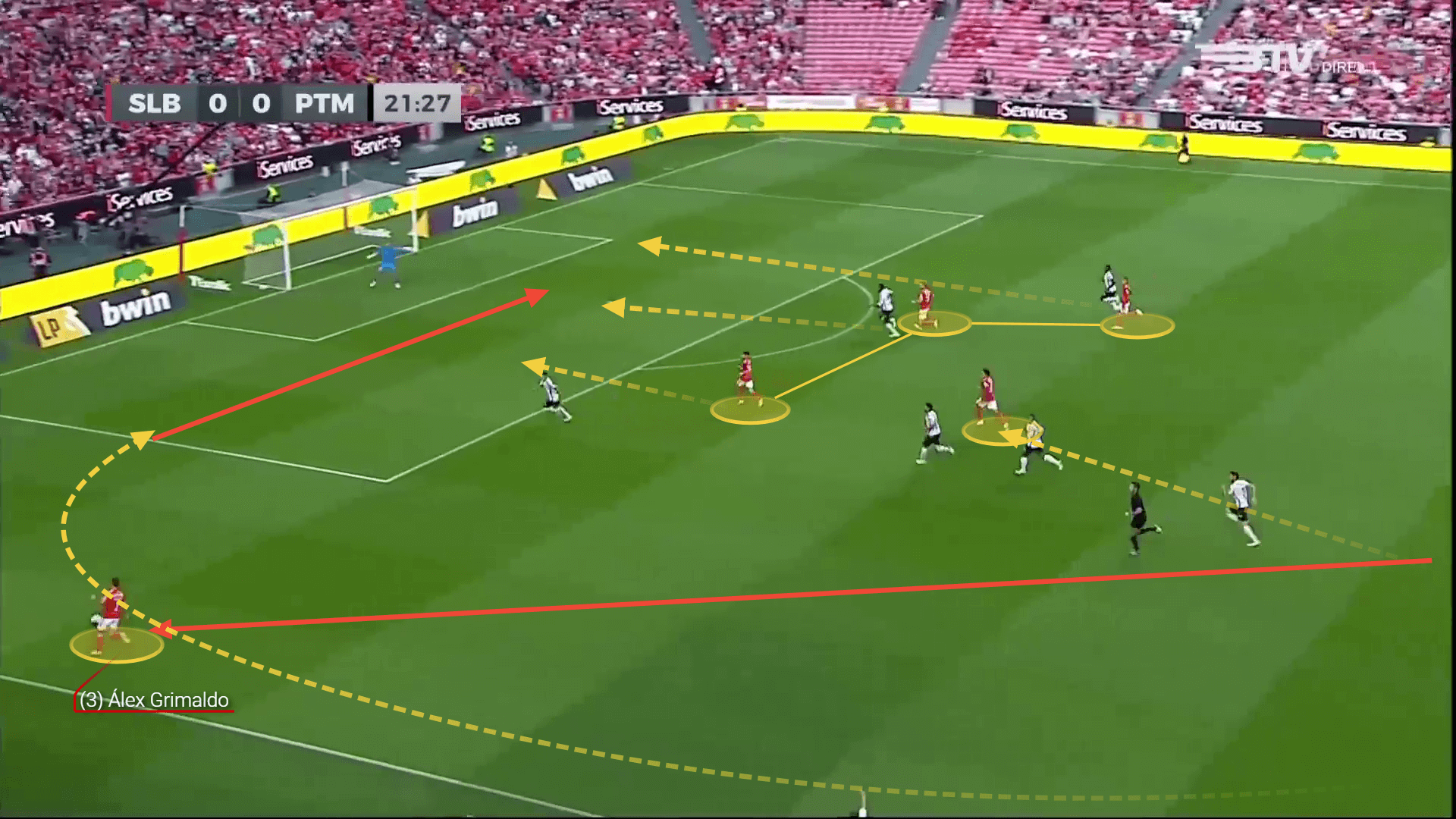
Their crossing attempts are equally successful from both flanks which increases their quality chances in front of the goal. They have the highest cross completion rate (40.1%) and are second in terms of touches in the penalty area per 90. That underlines their ability to occupy the advanced areas and to use their positioning smartly.
They commit many bodies in the opposition half and rely on dragging players out of position and exploiting spaces with their through balls. Most of the regular starters in the advanced areas are creative players and provide high numbers of key passes per game. They use their flair as an advantage and often opt for intelligent solutions in attack.
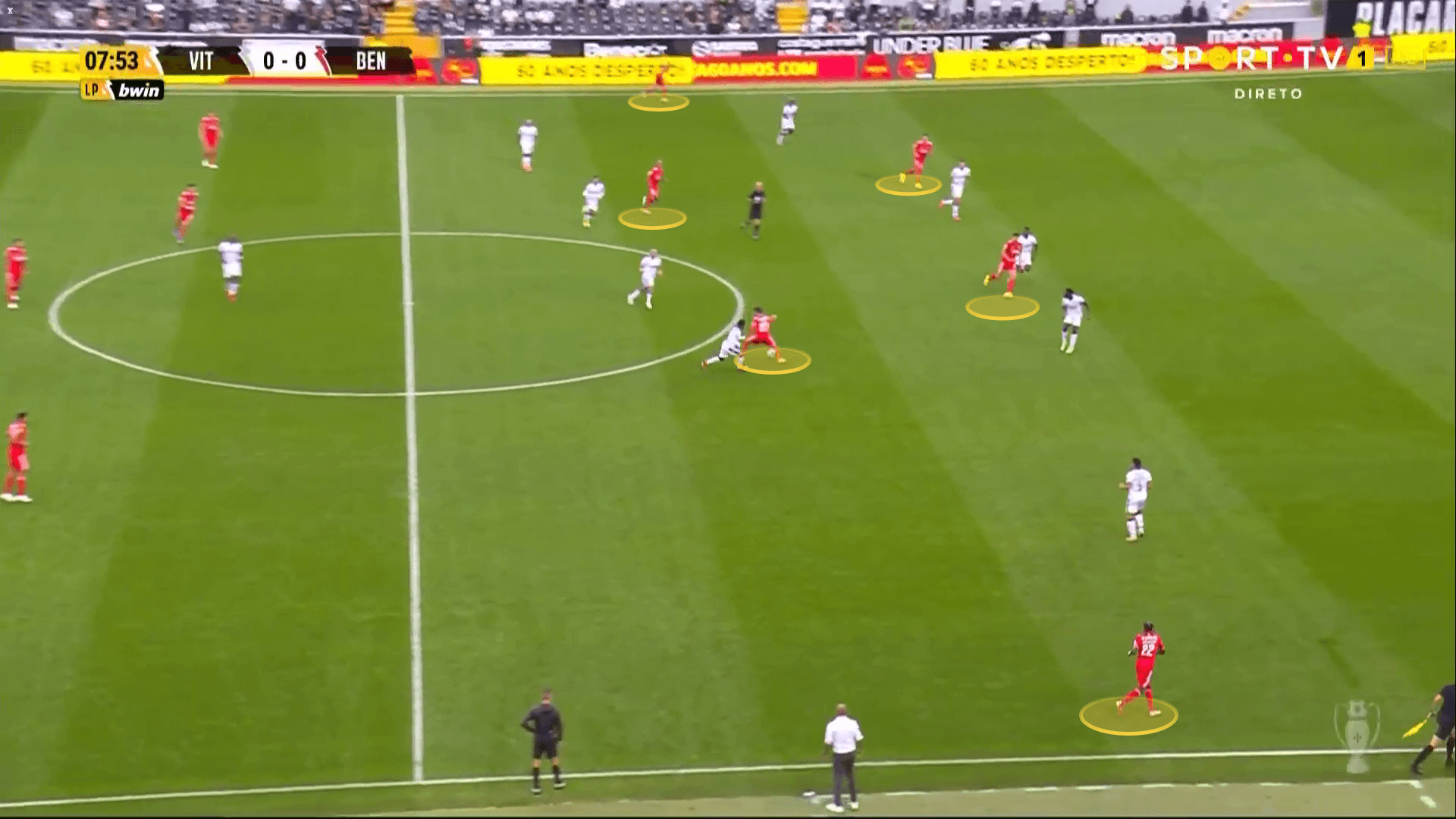
That is possible because of the high pass frequency and the constant supply of the ball to the final third. The team register the highest number of passes to the final third per 90 in the league. So far, the team are doing well, despite the absence of their 2020/21 top goalscorer, Haris Seferovic (22 goals), due to injury.
Another strength in Benfica’s approach is their counter-attacking actions. The team are good at stealing the ball from the opposition, which often results in creating chances on a counter. They use their pace and passing abilities in these situations, although the pressure often keeps them away from shooting and scoring.
Last, but not least, Jesus’ side are successful in creating opportunities through their attacking set-plays. They have taken advantage of their chances four times in eight games.
Pressing and defensive performance
Benfica are very consistent in their defensive performance. The team are instructed to press high, often starting with blocking the opposing goalkeeper’s passing lanes and forcing him into inaccurate passing. Their man-to-man approach helps them in challenging the ball carrier and often results in ball recovery, which is one of the main reasons for the team’s success. They are proficient in stealing the ball from the opposition in the advanced areas which is another reason why they have a higher possession percentile.
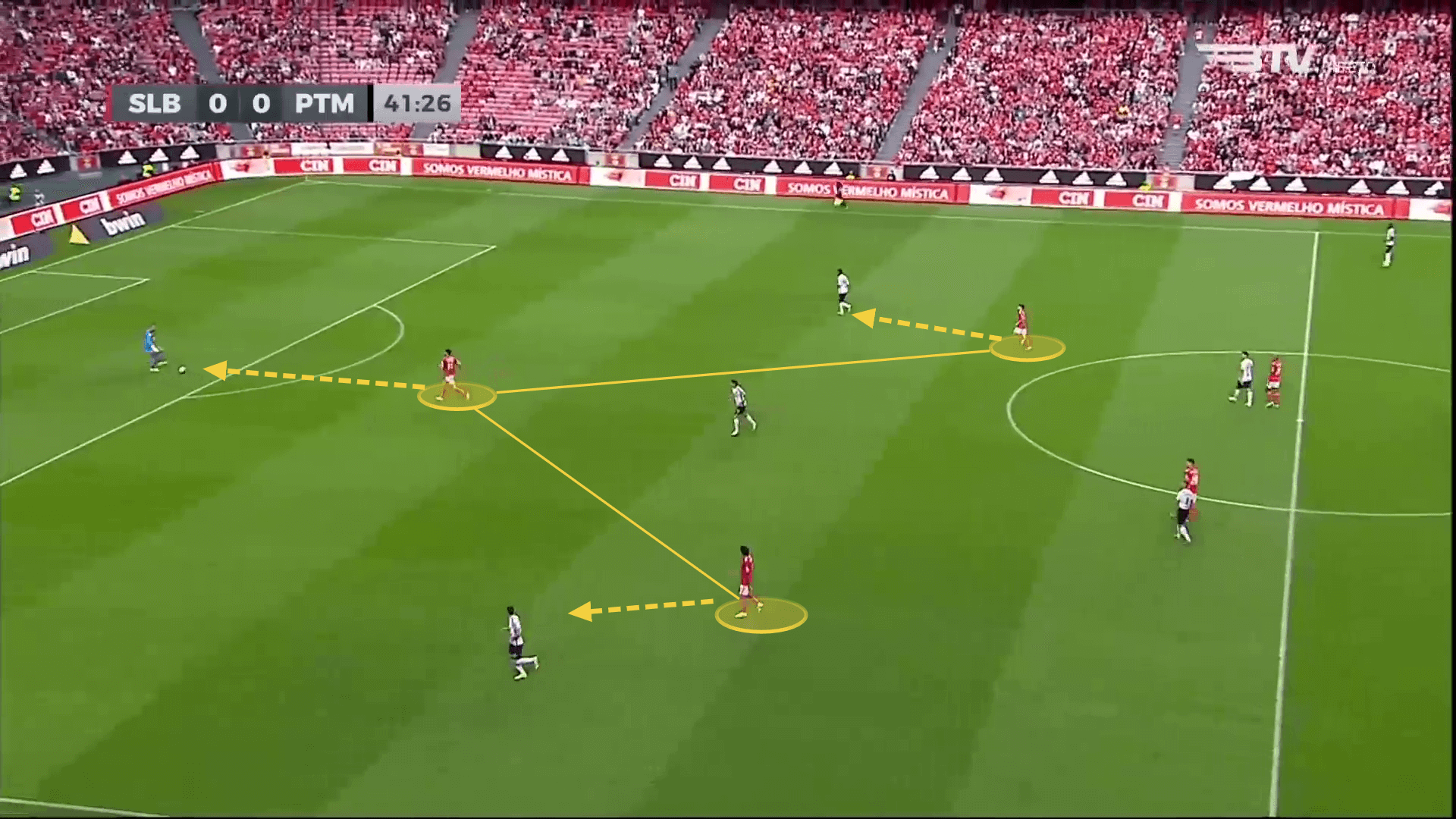
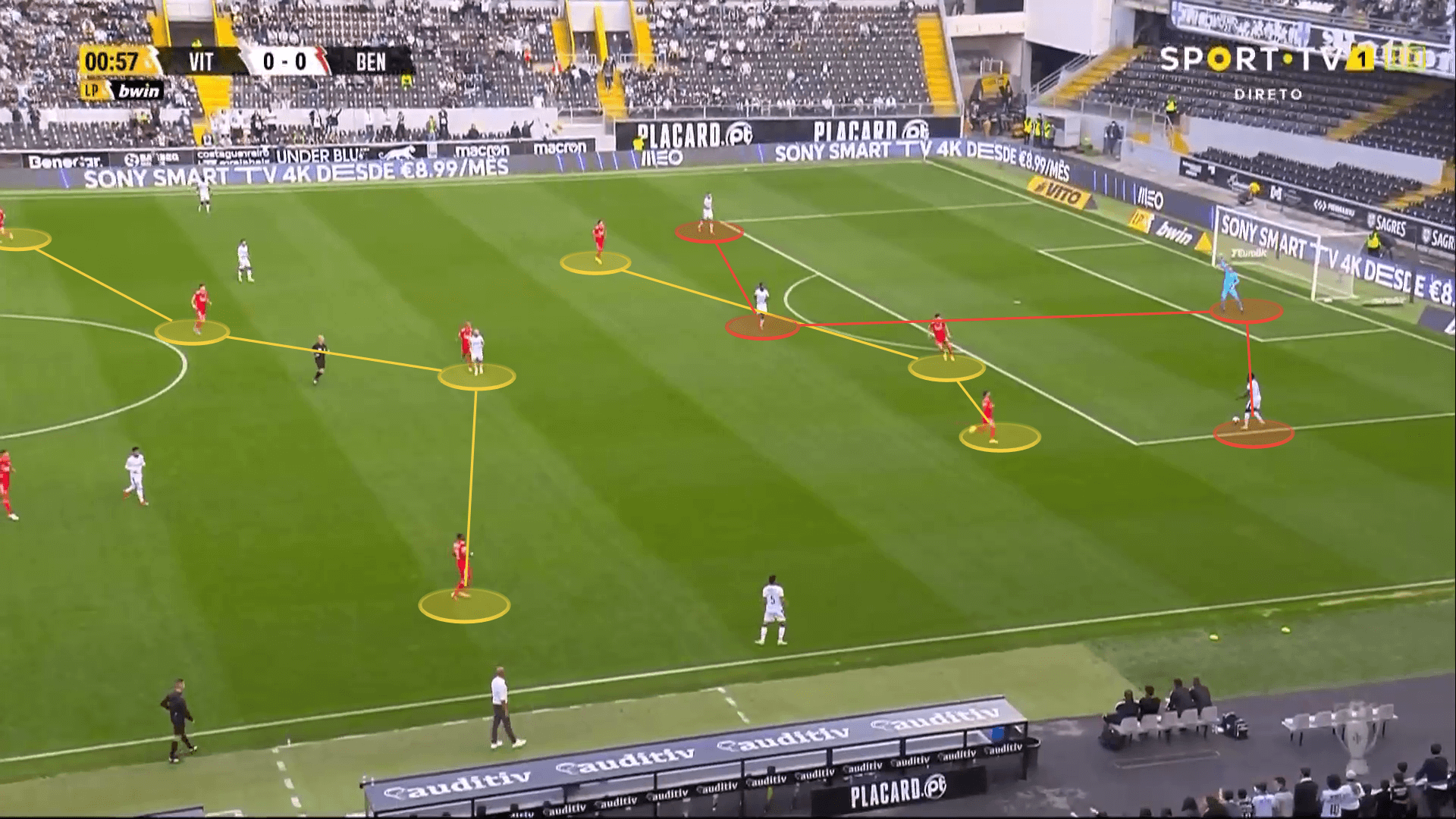
They try to block the opposition’s passing lanes and limit their access to the goal, defending predominantly in a 5-3-2. Their pressing efforts are often beneficial and save them from accepting the play in their own half, which has resulted in them being top of the league in terms of shots conceded per 90; the team only concede 6.24 shots on average per game. Despite the 6.1 PPDA rate, that is not the only reason for their success. Benfica’s players are solid in their 1vs1 duels too, which gives them a lot of confidence and saves them a lot of trouble, even when they have allowed the opposition deeper in their own half.
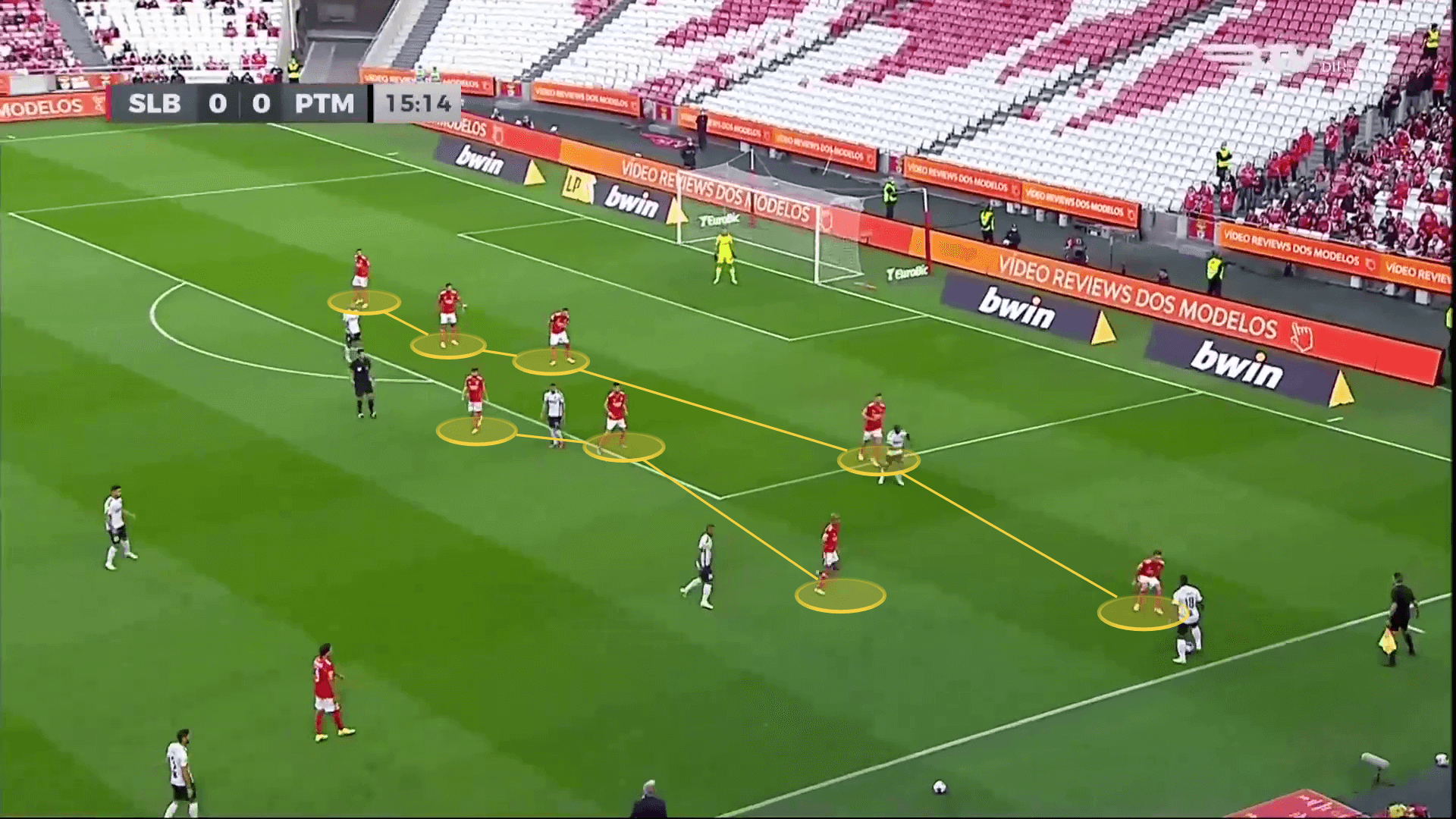
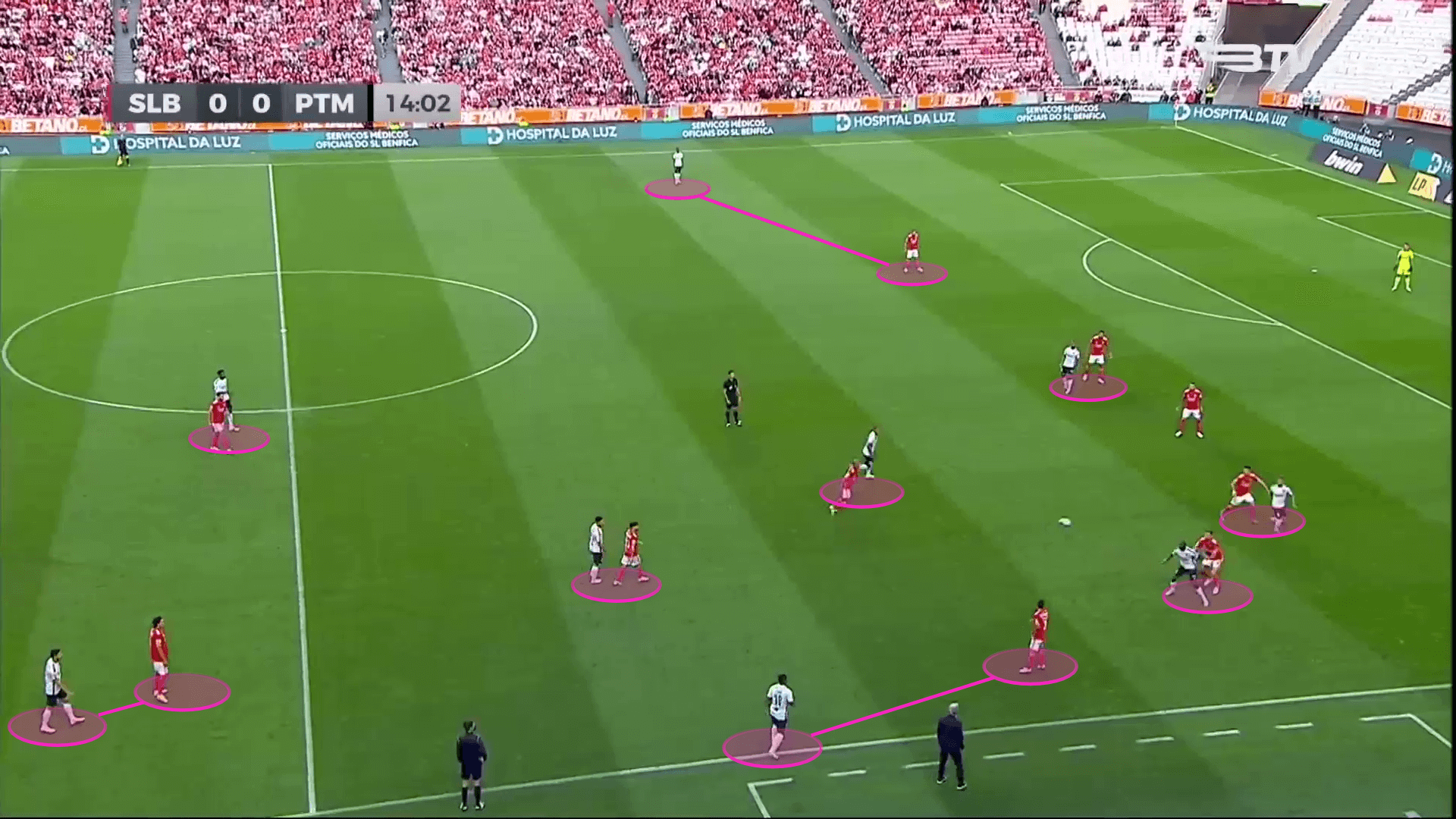
That is actually what saves them from conceding more goals, as due to their advanced positioning in possession, they leave gaps behind, especially when it comes to the wing-backs’ movement. Not only does the team have a high defensive duels success rate, but even more importantly, they win a high number of their aerial challenges, which gives them an advantage in many situations.
They are more vulnerable when caught on a counter, as it is difficult to regroup and drop players back so quickly. The three-man defensive line sometimes lack support and find it difficult to defend against skilful players. Veríssimo is often positioned high too and is prone to losing the ball rather often, which increases the risk in front of Benfica’s goal. Grimaldo is another player that often loses possession, making the team more vulnerable on the flanks, which their opponents often try to exploit.
Conclusion
As our analysis shows, Benfica have a balanced approach and skilful players which expectedly leads to their solid displays this season. They’ve managed the circumstances well so far and have successfully minimized their opponents’ access to the goal with their pressing efforts and defensive movement. It is early to predict whether the team will lift the title again, especially with the strong competition, but they certainly have the capacity and versatility to do so.



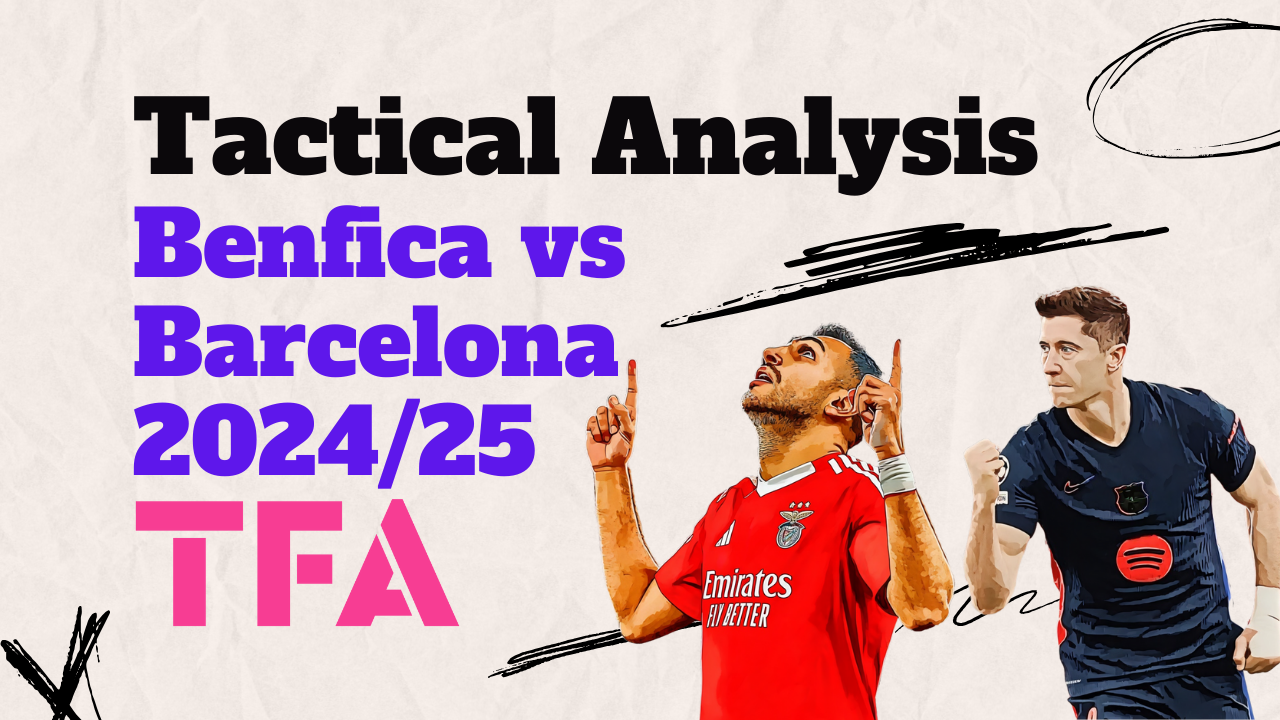
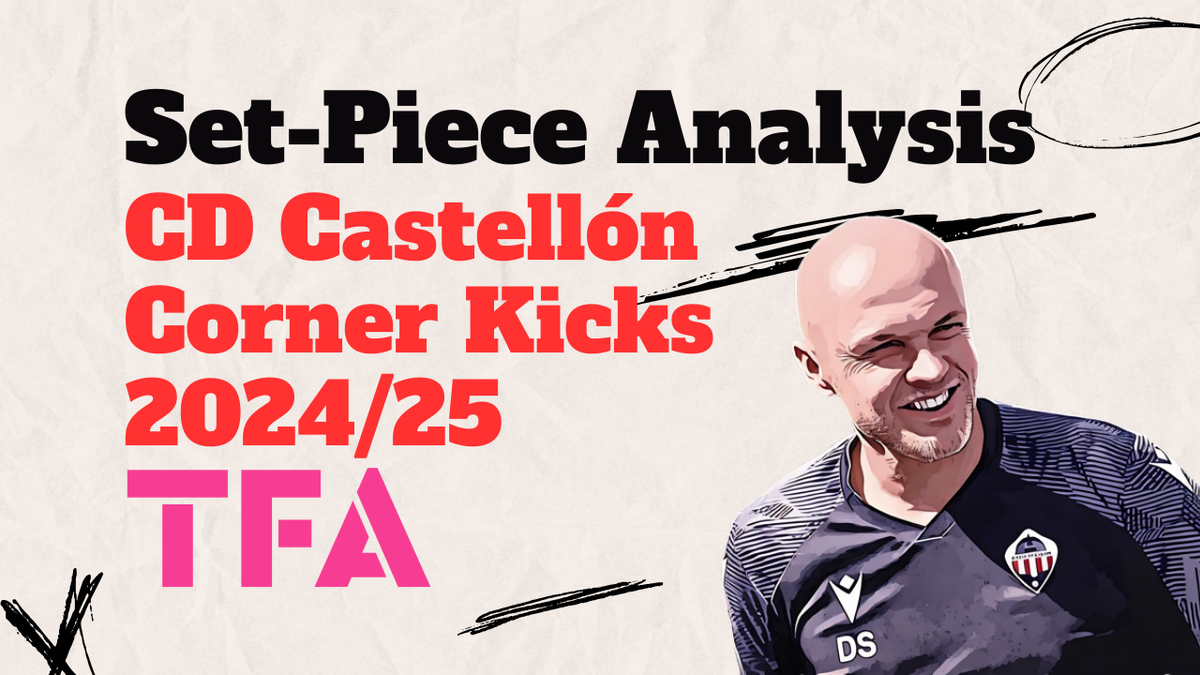

Comments